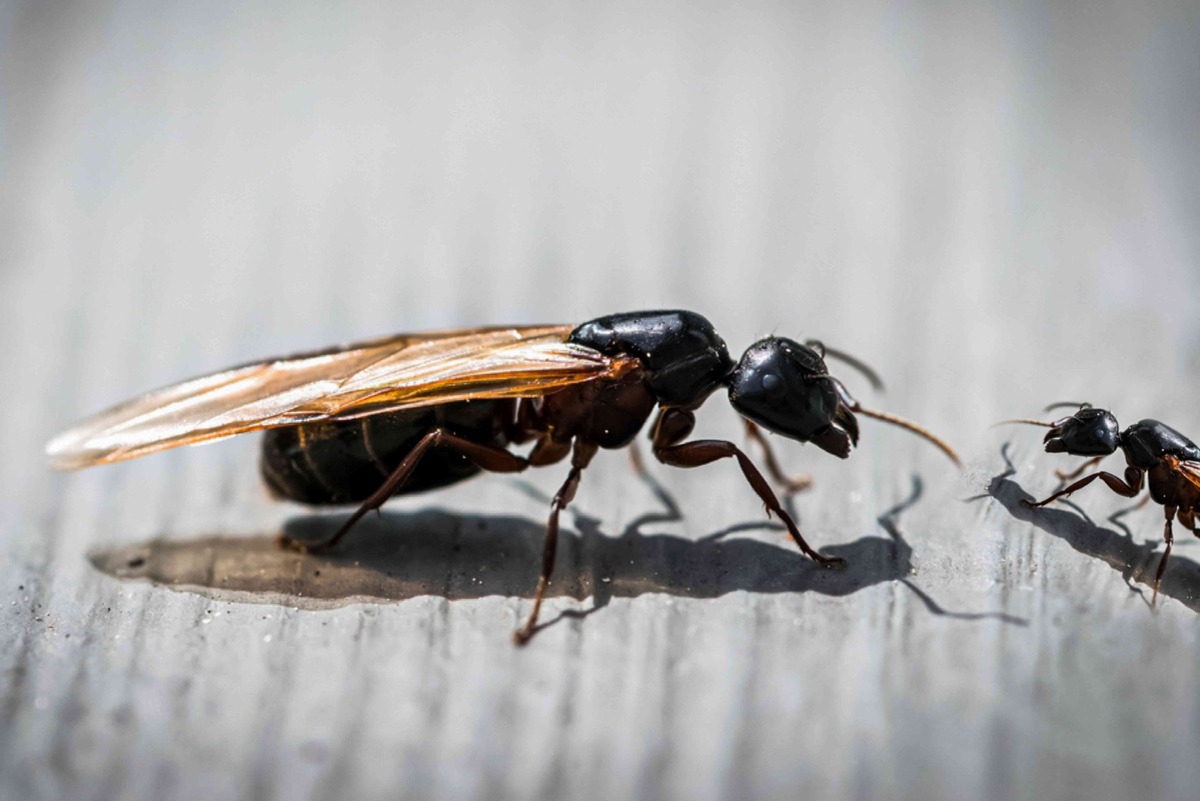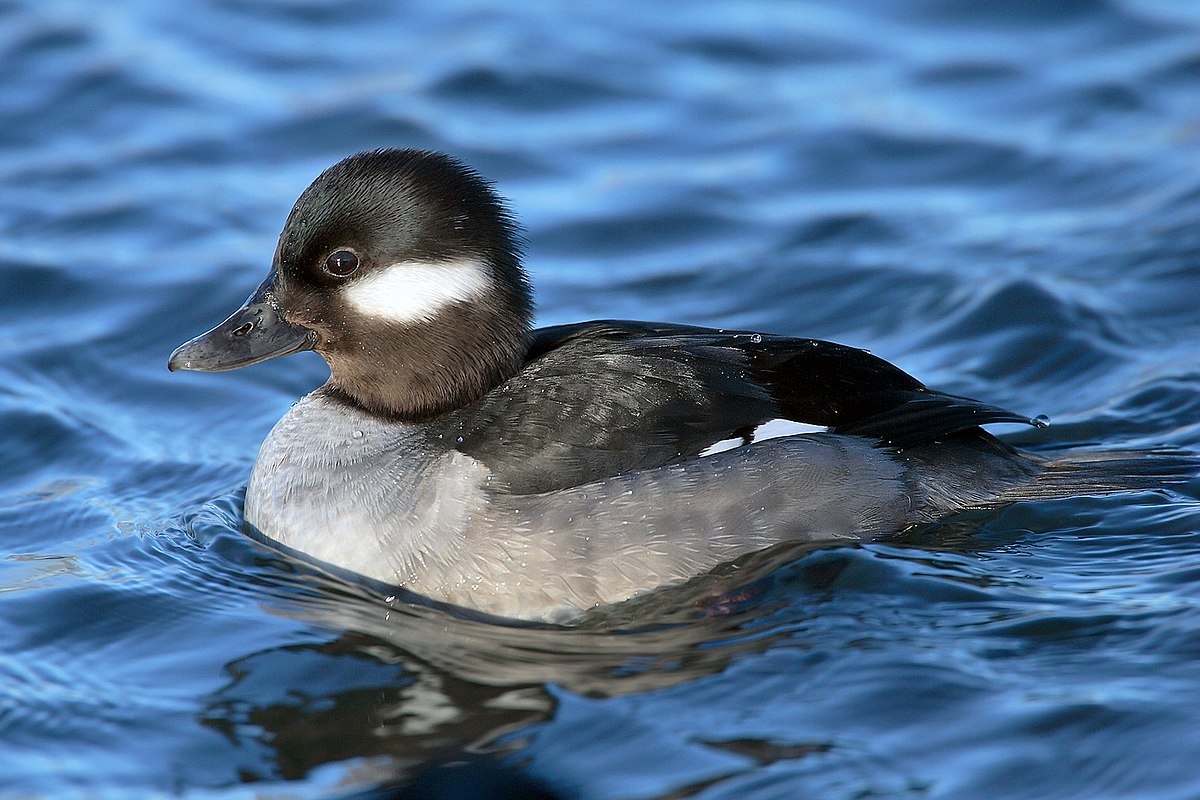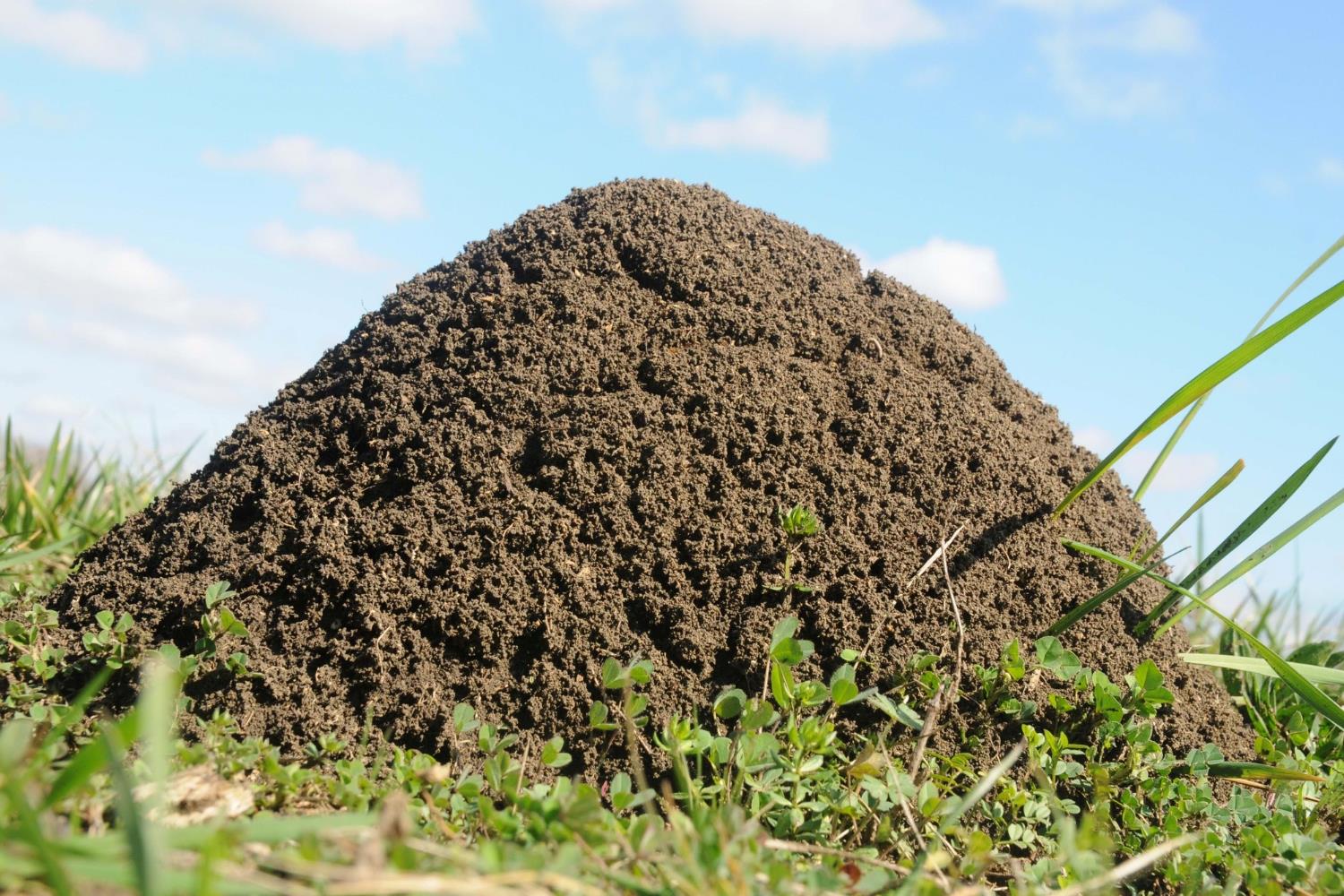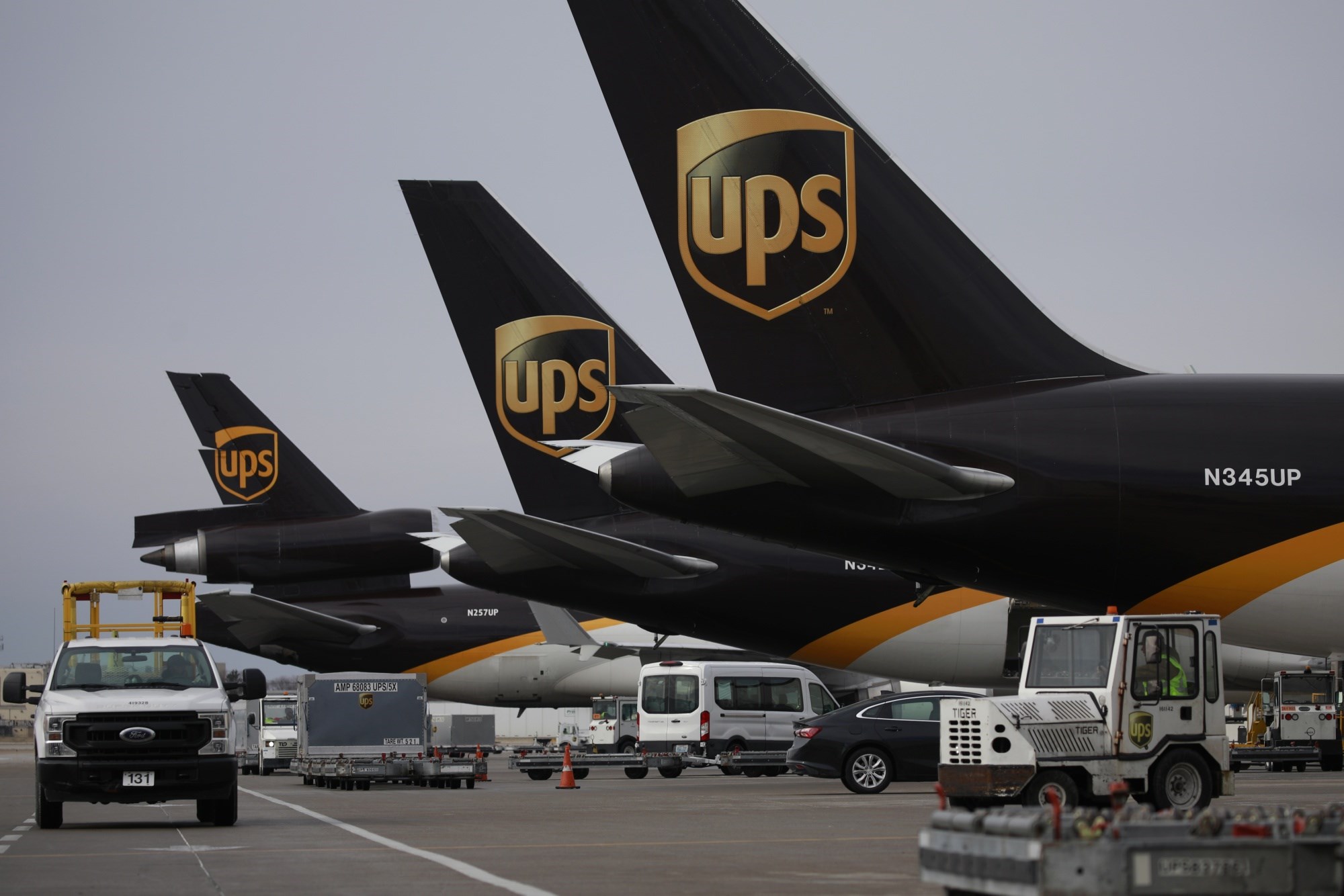Home>Home and Garden>5 Surprising Reasons Why Flying Ants Invade Your Home


Home and Garden
5 Surprising Reasons Why Flying Ants Invade Your Home
Published: February 20, 2024
Discover the top 5 unexpected causes of flying ant invasions in your home. Learn how to protect your home and garden from these pesky pests.
(Many of the links in this article redirect to a specific reviewed product. Your purchase of these products through affiliate links helps to generate commission for Noodls.com, at no extra cost. Learn more)
Table of Contents
Introduction
Have you ever experienced the sudden invasion of flying ants in your home, leaving you puzzled and slightly uneasy? You're not alone. Flying ants, also known as alates, can be a surprising and unwelcome sight for many homeowners. These winged insects are not a distinct species but rather reproductive members of ant colonies. While their presence may seem random and perplexing, there are several underlying reasons why flying ants choose to invade homes. Understanding these factors can help demystify their sudden appearance and guide you in taking effective measures to manage and prevent such occurrences.
Flying ants are often mistaken for termites due to their similar appearance, but they can be distinguished by their pinched waists and elbowed antennae. Unlike termites, which cause structural damage by feeding on wood, flying ants do not pose the same threat. However, their presence indoors can still be a cause for concern, prompting homeowners to seek insights into their behavior and motivations.
In this article, we will delve into the intriguing world of flying ants and explore the five surprising reasons behind their invasion of homes. By shedding light on these factors, you will gain valuable knowledge that can help you address and mitigate the presence of flying ants in your living spaces. Let's embark on this enlightening journey to unravel the mysteries of flying ant invasions and empower ourselves with the understanding needed to deal with this common household occurrence.
Reason 1: Mating Season
During specific times of the year, flying ants embark on a remarkable journey that marks a crucial phase in their life cycle: mating season. This period, often triggered by warm and humid weather conditions, prompts the emergence of winged male and female ants from their respective colonies. The sight of swarms of flying ants can be quite astonishing, especially when they infiltrate homes in search of suitable mates and new nesting sites.
Mating season serves as a pivotal event for flying ants, as it enables them to propagate and establish new colonies. The process typically begins with male and female ants from different colonies taking flight simultaneously, creating a mesmerizing spectacle as they engage in aerial courtship. Once a female ant successfully mates with a male, she sheds her wings and seeks a suitable location to establish a new colony. This quest for a nesting site can lead flying ants to venture into residential properties, drawn by the allure of shelter and conducive environments for colony formation.
The presence of flying ants within homes during mating season can be attributed to their instinctual drive to seek out diverse environments for colony establishment. The abundance of potential nesting sites, coupled with the warmth and protection offered by indoor spaces, makes residential properties an attractive destination for these airborne insects. As a result, homeowners may find themselves contending with the unexpected presence of flying ants as these industrious creatures pursue their reproductive imperative.
Understanding the influence of mating season on flying ant behavior is crucial for homeowners seeking to manage and prevent infestations. By recognizing the seasonal patterns that trigger flying ant activity, individuals can take proactive measures to fortify their homes against potential invasions. Additionally, gaining insight into the mating behaviors of flying ants can foster a deeper appreciation for the natural rhythms and instincts that drive these fascinating insects during this significant phase of their life cycle.
Reason 2: Weather Conditions
Weather conditions play a pivotal role in influencing the behavior of flying ants, often serving as a catalyst for their unexpected incursions into homes. These resilient insects are adept at detecting subtle shifts in environmental cues, prompting them to take to the skies in response to specific atmospheric triggers. Understanding the intricate relationship between weather patterns and flying ant activity is essential for homeowners seeking to comprehend and address these seasonal occurrences.
Warm and humid weather sets the stage for flying ants to embark on their airborne expeditions. These climatic conditions, typically prevalent during the spring and summer months, create an optimal environment for the emergence of winged reproductive ants. The combination of warmth and moisture serves as a signal for ant colonies to release their alates, signaling the onset of mating season and the quest for new nesting sites.
The influx of flying ants into residential spaces during favorable weather conditions can be attributed to their instinctual response to environmental cues. As temperatures rise and humidity levels increase, flying ants seize the opportunity to venture beyond their colonies in search of mates and suitable locations for colony establishment. The allure of indoor environments, with their regulated temperatures and potential nesting opportunities, further entices flying ants to explore homes as potential sites for expansion.
Moreover, weather fluctuations, such as sudden rain showers or unseasonable warmth, can trigger the mass emergence of flying ants, catching homeowners off guard. These abrupt shifts in weather patterns can prompt flying ants to seek refuge indoors, leading to unexpected incursions into living spaces. The resilience and adaptability of flying ants in responding to weather dynamics underscore their remarkable ability to capitalize on environmental cues to further their reproductive and survival objectives.
By recognizing the profound impact of weather conditions on flying ant behavior, homeowners can proactively prepare for potential incursions and fortify their homes against these seasonal visitors. Implementing preventive measures, such as sealing entry points and minimizing moisture accumulation, can help mitigate the likelihood of flying ant invasions during periods of conducive weather. Additionally, gaining insight into the intricate interplay between weather patterns and flying ant activity fosters a deeper appreciation for the remarkable adaptability and resilience displayed by these industrious insects in the face of environmental fluctuations.
Reason 3: Seeking Shelter
Flying ants, driven by their instinctual urge to secure suitable nesting sites, often embark on a quest for shelter that leads them to explore diverse environments, including residential properties. The compelling need for shelter serves as a primary motivator behind the unexpected presence of flying ants within homes, prompting these resourceful insects to seek refuge in indoor spaces.
Seeking shelter is a fundamental survival strategy for flying ants, especially during periods of environmental flux or inclement weather. When confronted with adverse conditions or the need to establish new colonies, flying ants display remarkable adaptability in identifying and capitalizing on potential shelter options. Residential homes, with their structural complexities and varied entry points, present an appealing prospect for flying ants in search of secure havens to fulfill their nesting requirements.
The intricate architecture of homes, characterized by crevices, voids, and conducive microenvironments, offers an array of potential shelter sites for flying ants to exploit. These resilient insects adeptly navigate through outdoor landscapes and urban settings, leveraging their keen sense of exploration to identify entry points that lead them indoors. Once inside, flying ants capitalize on the protective attributes of residential structures, utilizing the available spaces to establish temporary refuges or initiate the process of colony formation.
Furthermore, the allure of shelter within homes is amplified by the presence of favorable conditions that align with the nesting requirements of flying ants. The regulated temperatures, protection from outdoor elements, and access to potential food sources contribute to the appeal of residential environments as viable shelter options for these industrious insects. The quest for shelter within homes reflects the adaptive prowess of flying ants, as they strategically leverage human habitats to fulfill their fundamental biological imperatives.
Understanding the innate drive of flying ants to seek shelter within homes underscores the significance of implementing proactive measures to fortify residential properties against potential incursions. By addressing vulnerabilities such as gaps in window and door seals, repairing damaged screens, and minimizing access points, homeowners can mitigate the risk of flying ant infestations. Additionally, cultivating awareness of the shelter-seeking behaviors of flying ants fosters a deeper appreciation for the resourcefulness and adaptability displayed by these remarkable insects as they navigate their quest for survival and colony establishment.
Reason 4: Food Sources
Flying ants, in their quest for sustenance and nourishment, are adept at identifying and capitalizing on diverse food sources within their surrounding environments. The pursuit of food serves as a compelling motivator behind the unexpected presence of flying ants within homes, as these resourceful insects strategically navigate their surroundings in search of nourishment and sustenance.
The foraging behavior of flying ants is driven by their inherent need to procure essential nutrients to support colony development and sustenance. These industrious insects display remarkable adaptability in identifying and exploiting food sources, displaying a keen ability to capitalize on both natural and human-provided sustenance options. Within residential settings, flying ants are drawn to a spectrum of potential food sources, ranging from organic matter and decaying materials to human food remnants and pantry items.
The presence of accessible food within homes serves as a significant attractant for flying ants, prompting them to venture indoors in pursuit of nourishment. Crumbs, spills, and unsealed food containers present enticing opportunities for these resourceful insects to satisfy their dietary requirements. Additionally, the presence of organic waste, such as compost bins or neglected food residues, can further entice flying ants to explore residential spaces in search of sustenance.
Moreover, the interconnected nature of ecosystems within and around homes provides flying ants with a diverse array of potential food sources. From scavenging on outdoor vegetation to exploiting the offerings of pet food bowls and kitchen provisions, flying ants adeptly navigate their surroundings to secure the sustenance needed to support their colonies. The availability of food within homes, coupled with the strategic utilization of outdoor resources, underscores the adaptive prowess of flying ants in fulfilling their dietary imperatives.
Understanding the pivotal role of food sources in driving flying ant behavior underscores the importance of implementing proactive measures to mitigate the allure of residential environments. By adopting practices such as promptly cleaning up food spills, sealing food containers, and managing organic waste effectively, homeowners can reduce the attractiveness of their homes as potential foraging grounds for flying ants. Additionally, cultivating awareness of the foraging behaviors of flying ants fosters a deeper appreciation for the resourcefulness and adaptability displayed by these remarkable insects as they navigate their quest for sustenance and colony development.
Reason 5: Colony Expansion
The phenomenon of flying ants invading homes can also be attributed to their inherent drive for colony expansion. As thriving and dynamic social insects, flying ants are driven by the imperative to propagate and establish new colonies, a fundamental aspect of their biological and ecological significance. The pursuit of colony expansion serves as a compelling motivator behind the unexpected presence of flying ants within residential spaces, shedding light on the intricate dynamics that govern their behavior.
Colony expansion represents a pivotal phase in the life cycle of flying ants, marking the culmination of their reproductive efforts and the initiation of new colony formations. This process is intricately linked to the dispersal of winged reproductive ants, or alates, which venture beyond their natal colonies in search of suitable locations to establish independent colonies. The presence of flying ants within homes during this phase underscores their strategic exploration of diverse environments to fulfill their reproductive imperatives.
The quest for colony expansion drives flying ants to venture into residential properties, drawn by the allure of potential nesting sites and conducive environments for colony development. The intricate architecture of homes, characterized by structural complexities and varied entry points, presents an array of opportunities for flying ants to capitalize on as they seek to initiate the process of colony establishment. The resilience and adaptability displayed by flying ants in navigating urban landscapes and identifying potential nesting sites within homes underscore their remarkable capacity for strategic exploration and resource utilization.
Furthermore, the presence of favorable conditions within residential environments, including regulated temperatures, protection from outdoor elements, and access to potential food sources, further amplifies the appeal of homes as viable locations for colony expansion. Flying ants adeptly leverage the resources and shelter provided by residential properties, strategically positioning themselves to initiate the formation of new colonies and perpetuate their species.
Understanding the intrinsic drive of flying ants for colony expansion underscores the significance of implementing proactive measures to fortify residential properties against potential incursions. By addressing vulnerabilities such as gaps in window and door seals, repairing damaged screens, and minimizing access points, homeowners can mitigate the risk of flying ant infestations. Additionally, cultivating awareness of the colony expansion behaviors of flying ants fosters a deeper appreciation for the strategic acumen and adaptability displayed by these remarkable insects as they navigate their quest for reproductive success and ecological proliferation.
Conclusion
In conclusion, the presence of flying ants within homes can be attributed to a convergence of intriguing factors that underscore the remarkable adaptability and strategic acumen displayed by these industrious insects. From the influence of mating season and weather conditions to the compelling drives for shelter, sustenance, and colony expansion, flying ants navigate their surroundings with purposeful intent, seeking to fulfill their biological imperatives and perpetuate their species.
The insights gleaned from exploring the surprising reasons behind flying ant invasions provide homeowners with a deeper understanding of the intricate dynamics that govern these seasonal occurrences. By recognizing the seasonal patterns that trigger flying ant activity and the environmental cues that prompt their incursions into homes, individuals can proactively prepare for and mitigate the likelihood of infestations. Implementing preventive measures, such as fortifying entry points, managing food sources, and addressing vulnerabilities within residential properties, empowers homeowners to safeguard their living spaces against potential flying ant invasions.
Furthermore, cultivating awareness of the behaviors and motivations driving flying ants' incursions into homes fosters a deeper appreciation for the resilience, adaptability, and ecological significance of these remarkable insects. The innate drive of flying ants to seek shelter, sustenance, and suitable nesting sites within residential environments underscores their capacity to navigate and capitalize on diverse habitats, showcasing their strategic prowess in fulfilling their fundamental biological imperatives.
By unraveling the mysteries of flying ant invasions and gaining valuable insights into the factors shaping their behavior, homeowners can approach these seasonal occurrences with informed perspectives and proactive strategies. Embracing a holistic understanding of flying ant behavior not only equips individuals with the knowledge needed to address and prevent infestations but also fosters a deeper appreciation for the intricate ecological roles and adaptive capabilities displayed by these captivating insects.
In essence, the presence of flying ants within homes serves as a testament to the remarkable interplay between natural instincts, environmental cues, and the resourceful navigation displayed by these industrious insects. By delving into the captivating world of flying ants, homeowners can embark on an enlightening journey that unveils the hidden intricacies of these seasonal visitors, empowering them to coexist harmoniously with the captivating phenomena of nature.














